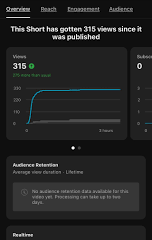Rumble: A New Era for Content Creators

Introduction to Rumble
In an age where content creation is booming, platforms that support creators are becoming increasingly essential. Rumble, a video-sharing platform founded in 2013, has gained prominence recently as a newcomer that challenges established giants like YouTube and Vimeo. With increasing concerns about censorship and monetization, Rumble offers a fresh alternative that prioritizes freedom of expression and revenue opportunities for content creators.
Recent Developments and Features
Rumble has made headlines in 2023 due to its rapid growth and strategic partnerships. The platform boasts over 50 million active monthly users, marking a significant increase from the previous year. One of its most notable developments is the introduction of Rumble’s “Rumble Play” feature, which empowers users to create and monetize their content with little to no ad restrictions.
Furthermore, Rumble has signed several exclusive deals with prominent content creators who seek more favorable monetization terms compared to traditional platforms. For instance, news commentator Dan Bongino and other notable personalities have shifted some of their content to Rumble, attracted by the platform’s user-centric policies and commitment to freedom of speech.
The Growing Community and Content Diversity
Rumble’s user base is remarkably diverse, encompassing a wide range of topics from politics and gaming to health and fitness. This diversity creates a vibrant community where individuals can share their ideas and engage in discussions without the fear of drastic algorithm changes that often affect visibility on mainstream platforms.
Additionally, Rumble has made significant strides in packaging its content for global audiences, recently announcing its plans to expand into non-English speaking markets. This includes translating content and working with local creators to foster a global community of content sharing and engagement.
Conclusion: The Future of Rumble
Rumble’s vision aligns with an ongoing trend towards decentralized and creator-led platforms. As censorship concerns continue to mount on mainstream social media, Rumble offers a refreshing alternative that champions creators’ rights while promoting free speech. Moreover, with its increasing user base and expanding features, Rumble is poised to become a significant player in the media landscape. For users and creators seeking a platform that values freedom and revenue potential, Rumble could become an invaluable tool in the years to come.









